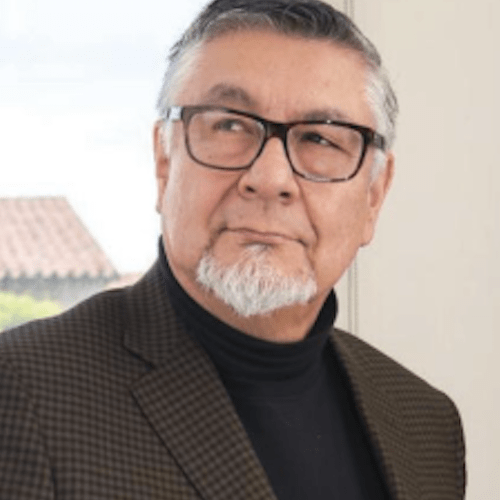Report: Autistic children at the intersection of race and poverty experience compounding health risks
Research by a team co-led by Dr. Alice Kuo finds that autism, poverty, and ethnicity appear to increase rates of health concerns and care challenges.

A team co-led by Dr. Alice Kuo, UCLA Fielding School of Public Health associate professor of health policy and management and of medicine at the David Geffen School of Medicine at UCLA, has found that autism, poverty and non-white race/ethnicity appear to increase rates of health concerns and care challenges, both individually and in combination.
Kuo serves as project investigator for the Autism Intervention Research Network on Physical Health (AIR-P), a multi-site collaboration housed within UCLA Health’s Department of Medicine, which has released a new report that uses national data to highlight the intersection of autism, poverty and race/ethnicity and their compounding impact on health and health care.
While it is well-known that autistic children, children from lower-income households and children who are Black, Indigenous and People of Color (BIPOC) disproportionally experience poor health and health care access, very little is known about how these social identities “intersect” to impact health and health care outcomes. There is a need to better understand the intersectionality of these multiple characteristics to figure out how to target and tailor interventions and improve health outcomes. The new report finds that autism, poverty and non-white race/ethnicity appear to increase rates of health concerns and care challenges both individually and in combination.
“Discrimination based on race and socioeconomic status is increasingly recognized as an important risk factor to people’s health,” said Kuo, chief of Medicine-Pediatrics at UCLA and project investigator for the federally-funded AIR-P. “With this report, we can begin to see the devastating combination of autism, poverty and race, an important step in translating the research we do into policy and practice to improve outcomes for people with autism.”
The team includes investigators from the Autism Institute at Drexel University in Philadelphia, including Dr. Kristy Anderson, a researcher at the Institute and first author of the report
“Findings like these are important because policymakers, decision-makers and advocates use this information to better understand the needs of the autism population and guide the development of targeted programs and services” Anderson said.
Report Highlights
To better understand the economic situation of autistic children, the report provides new estimates about the size and characteristics of the population living in lower-income households overall, and by key subgroups defined by race and ethnicity. According to the report, over half of autistic children lived in low-income households and one in four was living in poverty, a higher rate compared to children without autism spectrum disorder. Children living in low-income households were more likely to be non-white relative to the general population.
Across all income levels, autistic children experienced more challenges than non-autistic children across a wide range of health outcomes.
- Both poverty and race/ethnicity independently and in combination contributed to health inequities among autistic children.
- Household income was a very important factor for understanding health disparities for autistic individuals, as it is associated with differences in health status, insurance coverage, medical expenditures, and health care access.
- Higher rates of health-related challenges were evident across all socioeconomic groups.
- While children living in poverty generally had the highest rates of health and health care challenges regardless of autism status, and rates typically decreased with each level of rising income, there were still notable differences in the relationship between income and health and health care among autistic children versus non-autistic children.
- Race/ethnicity were also risk factors for poor health and health care outcomes among autistic children.
- Differences between white and BIPOC children were also present across specific racial/ethnic categories.
- Racial/ethnic disparities remained even when we grouped children by household income.
The report found that groups who had multiple potential risk factors (poverty, autism, identifying as BIPOC) had higher rates of poor health and health care outcomes. In some cases, the differences observed between income groups were more substantial than the differences associated with autism status or between white and BIPOC children. The authors argue that efforts to reduce health inequities must be combined with efforts to improve the economic stability of children, especially those with autism and those who are BIPOC. They call for greater attention to programs and policies outside of health care to address health equity among U.S. autistic children.
The AIR-P uses identity-first language (eg: autistic person) rather than person-first language (eg: person with autism) when describing autism to align with the preferences of many self-advocates. AIR-P acknowledges and respects the choice of individuals on the autism spectrum to be referred to in their preferred terminology.
This project is supported by the Health Resources and Services Administration (HRSA) of the US Department of Health and Human Services (HHS) under award UT2MC39440, the Autism Intervention Research Network on Physical Health. The information, content, and/or conclusions are those of the author and should not be construed as the official position of, nor should any endorsements be inferred by HRSA, HHS, or the US Government.
by David Sampson
The UCLA Fielding School of Public Health, founded in 1961, is dedicated to enhancing the public's health by conducting innovative research, training future leaders and health professionals from diverse backgrounds, translating research into policy and practice, and serving our local communities and the communities of the nation and the world. The school has 761 students from 26 nations engaged in carrying out the vision of building healthy futures in greater Los Angeles, California, the nation and the world.
Faculty Referenced by this Article

Professor of Community Health Sciences & Health Policy and Management, and Associate Dean for Research
Nationally recognized health services researcher and sociomedical scientist with 25+ years' experience in effectiveness and implementation research.

Dr. Michelle S. Keller is a health services researcher whose research focuses on the use and prescribing of high-risk medications.

EMPH Academic Program Director with expertise in healthcare marketing, finance, and reproductive health policy, teaching in the EMPH, MPH, MHA program

Dr. Ron Andersen is the Wasserman Professor Emeritus in the UCLA Departments of Health Policy and Management.





































































